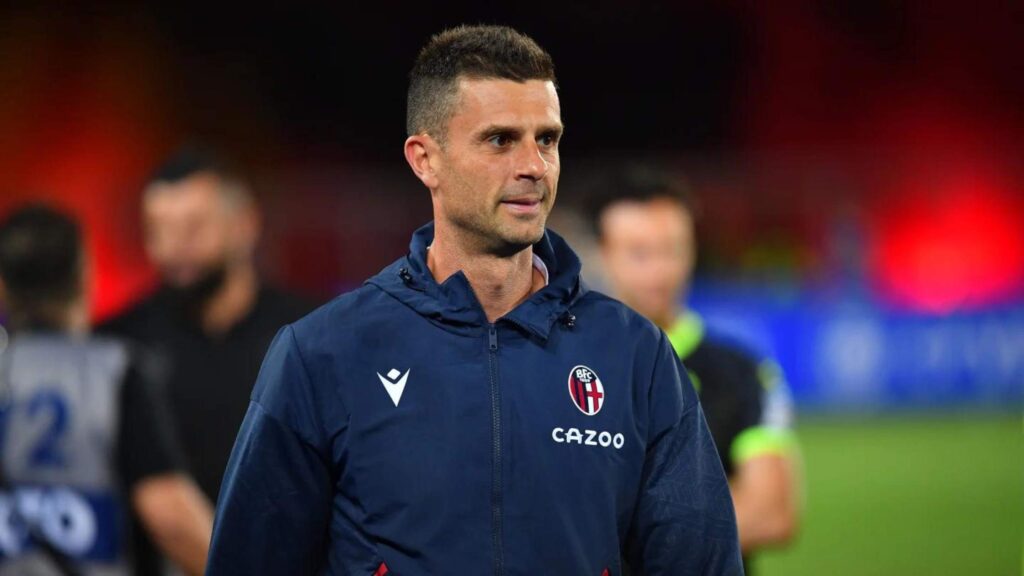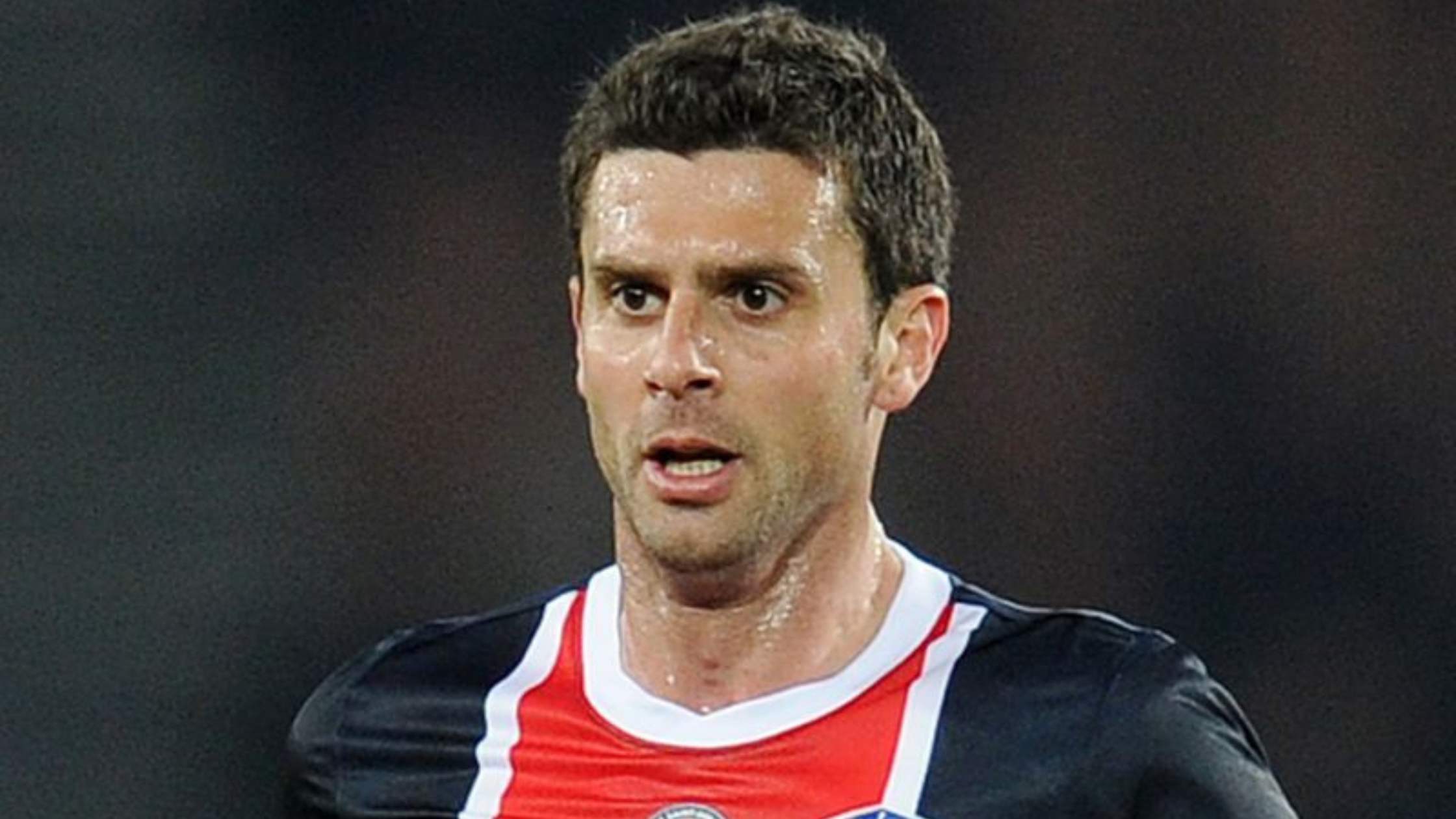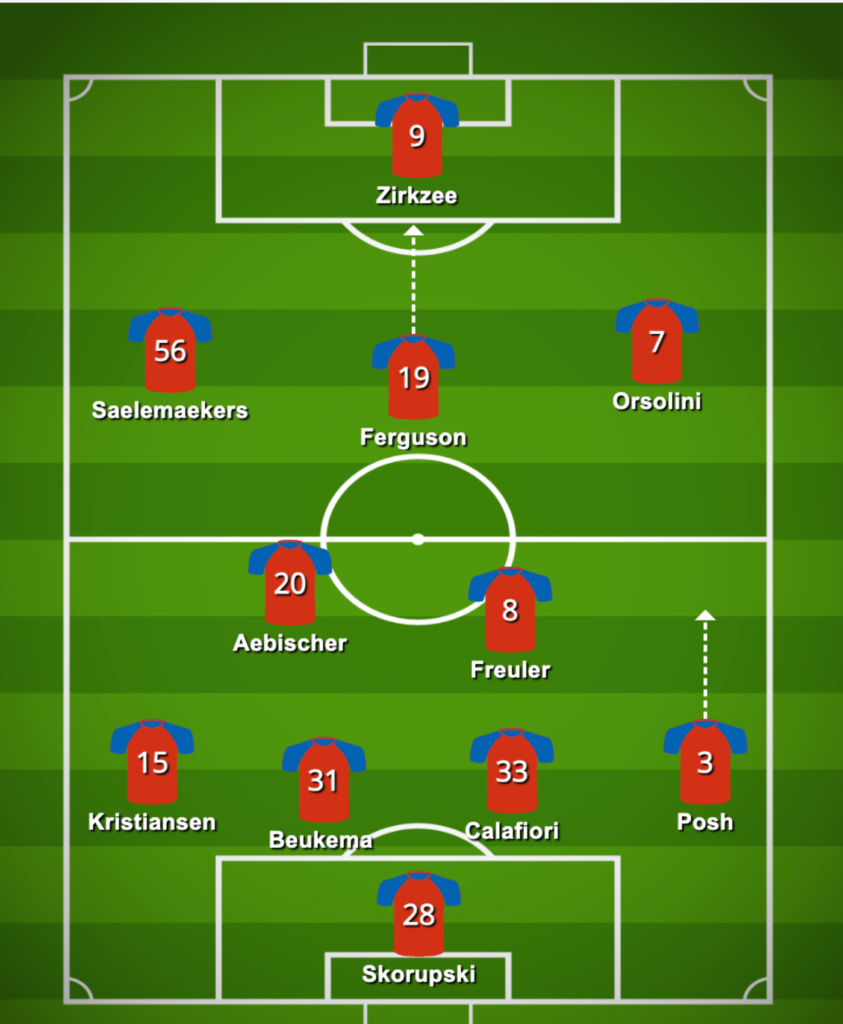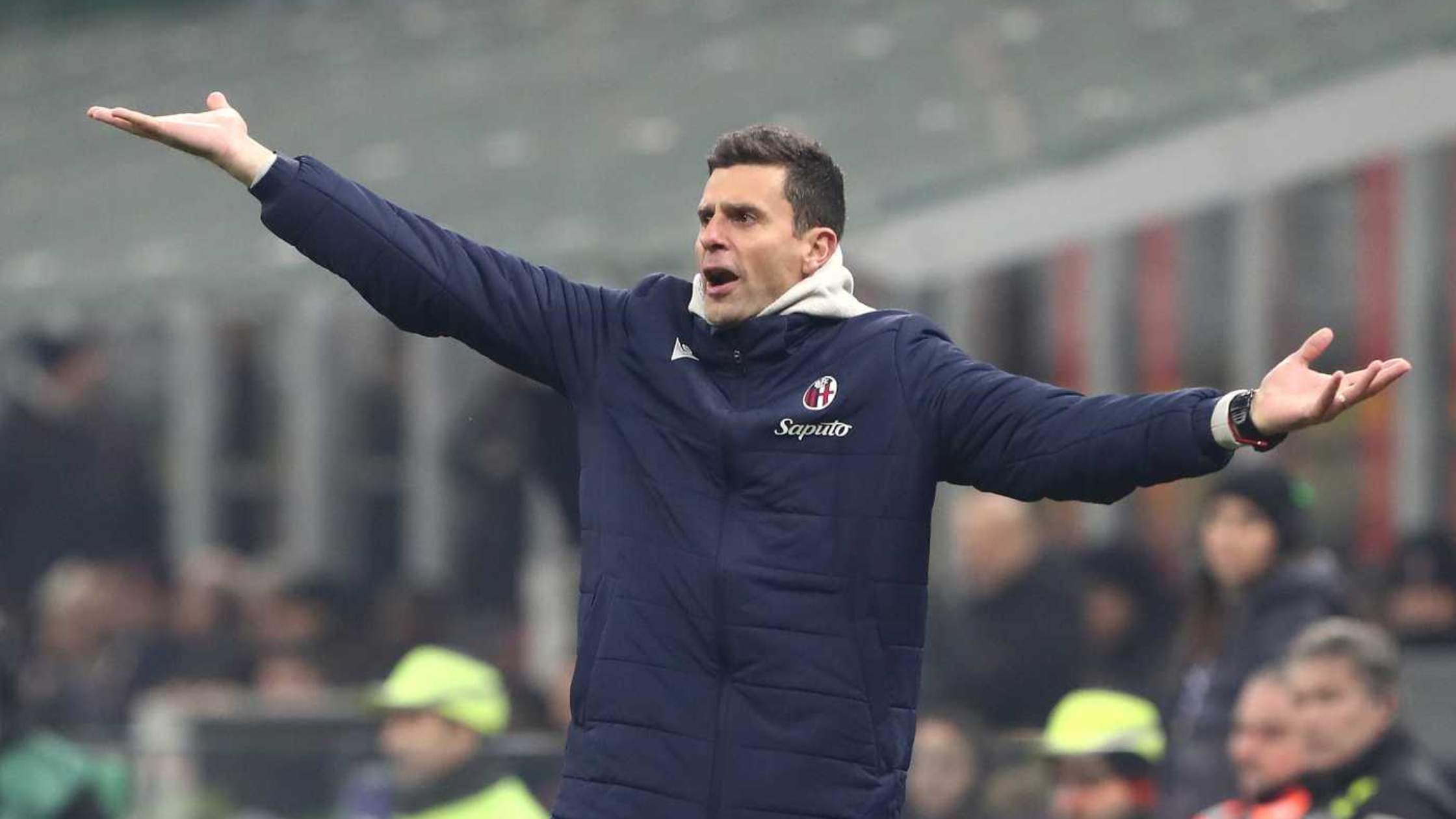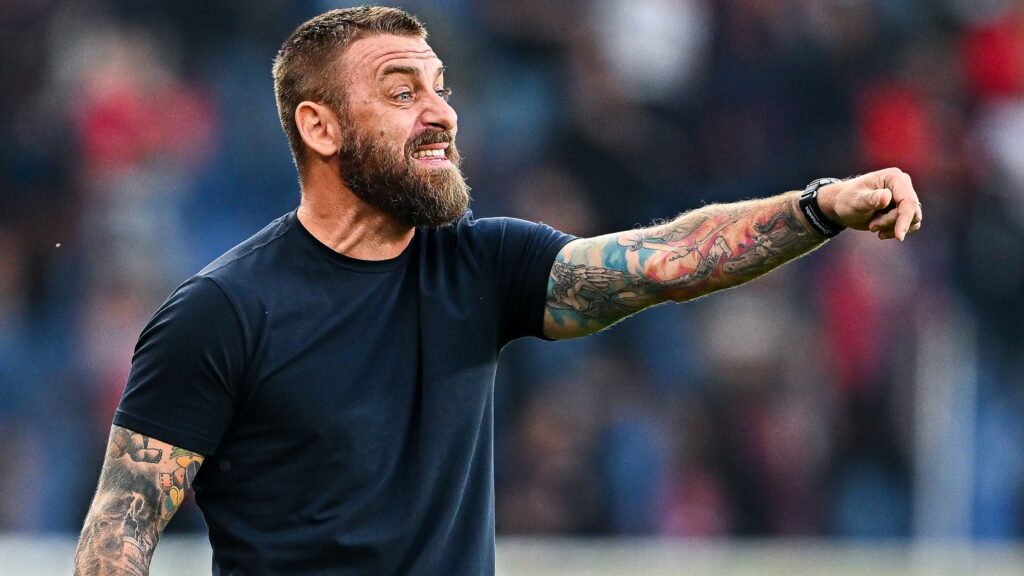Thiago Motta, the former great player, is making quite a splash as manager of Serie’s Bologna. In fact, his tactics have turned the club into the surprise package of the season. And, also given Motta’s reputation, it’s no wonder why top clubs are interested in keeping tabs on him.
Watching Bologna for the past two seasons has been very exciting. This is a squad destined for immortality among the fateful.
This is precisely why today I am looking at Thiago Motta and the tactics he has successfully employed as manager of Bologna.
Thiago Motta’s Career Prior to Managing Bologna
Thiago Motta is a relatively rare case of a young former player whose career took him to the very top. Born in Sao Paolo, Brazil, Motta would go on to play for four of the European heavyweights – Barcelona, Inter, Atletico Madrid and PSG.
Notably, he was also included in not one but two of the most important national squads in the world. While he represented his native Brazil early in his career, in 2011 he got the opportunity to play for Italy. He accumulated 30 caps for Squadra Azzurra.
Motta was a defensive midfielder who made his name for his toughness and for his pristine tactical understanding of the game. In retrospect, it’s no wonder that Motta chose to become a football manager immediately after his retirement.
Football Philosophy
Thiago Motta was a player whose entire style was based on excellent tactical understanding. This explains not only why he became a manager. It also makes it easy to understand why the tactical philosophies of Marcelo Bielsa and Joachim Low informed his early development. Both are known as managers who virtually revolutionized the game.
From Bielsa, Motta learned the importance of collective trust and the idea that every player has a role to play in the team’s attack. Motta’s man management has received a lot of praise. From Löw, a more surprising influence, Motta took the concept of the counter-press, which involves winning the ball back as quickly as possible after losing it. Of course, other managers like Jurgen Klopp or Julian Tuchel should also be noted as secondary influences.
Motta’s teams are known for their possession-based style of play, but they are also very aggressive in winning the ball back. His players are constantly moving and looking to create opportunities, both offensively and defensively. Bologna is currently in the top half of the Serie A table and is playing some of the most exciting football in the league.
At the time of writing, the team is battling for a Champions League spot. It’s something that would’ve seemed virtually impossible one year ago, especially considering the strength of their opponents.
Formations and adaptability
Bologna is not Motta’s first foray into management. It’s not even the first time he has managed in Serie A. After a short stint in charge of Paris Saint-Germain’s youth team, he was offered to take charge of Genoa. They finished bottom of the league. Another job, this time in charge of Spezia, followed. The team barely avoided relegation.
Success was not immediate. However, Thiago Motta stuck to a series of tactical principles to his credit. This Bologna team is the first to transform those into something resembling the style of a top club.
The starting formation of Motta’s teams is the first noteworthy detail regarding his tactics. While his base structure is a 4-3-3, Thiago Motta is known for his adaptable approach, often shifting between formations depending on the situation in the game.
For instance, he might use a 2-7-2 formation with the goalkeeper acting as the first midfielder or a 4-5-1 when sitting in a low block. Yes, the first time that he publically spoke about his 2-7-2, the manager was ridiculed. This adaptability allows his team to control the ball and maintain possession in different pitch areas.
Oftentimes, however, in the 2023/2024 season, Bologna has started in a more conservative 4-2-3-1 or 4-3-3 formation. When in possession, they may switch to a 2-3-2-3 and in defence, they’ll regroup in a 4-4-2 setup.
Bologna in defence
Thiago Motta’s Bologna presents a fascinating case study in defensive organization. Motta has crafted a system that blends aggressive high-pressing with controlled positional defending. As often is the case, it presents major risks. The team tends to concede one goal per 90 minutes.
Inspired by gegenpressing as well as Bielsa’s man-pressing, Motta’s Bologna adopts a proactive approach, aiming to win the ball back quickly after losing possession. This involves coordinated movements from all players, with the front three triggering the press by closing down passing lanes and applying pressure high up the pitch.
The midfield duo acts as a shield, covering central areas and preventing easy ball progression. Experienced midfielder Remo Freuler, a new addition to the team, and Michel Aebischer are tasked with this. This aggressive approach disrupts the opponent’s rhythm and creates opportunities for turnovers in dangerous areas.
When the initial press is bypassed, Bologna transitions into a well-organized defensive structure. The back four maintain a compact shape, with individual marking often replaced by zonal marking. The fullbacks tuck inside to narrow the channels, while the central defenders communicate effectively to track attackers and anticipate passes. Stefan Posch’s tackling, particularly, has helped the team greatly.
But Motta’s system isn’t rigid. The defensive approach adjusts based on the opponent and the game situation. If the initial high press is ineffective, Bologna might drop deeper into a mid-block, maintaining compactness and inviting the opposition to attack. However, they remain alert and ready to trigger a counter-press if the opportunity arises.
How Bologna Build-Up
Just how good is the Serie A presently? Well, it’s strong enough that teams like Lazio or last year’s champion, Napoli, are trailing Bologna. Furthermore, each year, a couple of powerhouse clubs fail to make the Champions League.
This is why Motta’s intention to control possession and be creative when having the ball shows tremendous bravery and trust in his players.
Bologna’s build-up often starts with the goalkeeper, Łukasz Skorupski. Comfortable with the ball at his feet, he acts as the first midfielder, initiating attacks with short passes to central defenders or directly launching long balls to bypass the press. Skorupski may not be as famous as other ball-playing goalkeepers, but he gets the job done.
One of Bologna’s most exciting offensive features is its use of “micro-transitions.” When they win the ball back in advanced areas, they switch into a rapid attacking mode, utilizing one-touch passing and quick movements to exploit the disarrayed opponent.
Bologna emphasizes the role of fullbacks, who tuck inside to create triangles with the central defenders and midfielders. This creates passing options, overloads specific areas, and facilitates ball circulation. The fullbacks also provide width later in the build-up, stretching the opponent’s defensive structure and opening space for attacking midfielders and wingers.
While comfortable with short, intricate passing, Bologna isn’t afraid to go vertical. Motta encourages direct balls when space opens up.
But all of that would be useless unless the Rossoblù also had the players to put the ball into the back of the net.
Bologna in Attack
When it comes to attacking, Thiago Motta’s Bologna strikes a balance between positional play and opportunistic explosiveness. Inspired by his mentors, Motta employs a system that utilizes quick combination play, individual skill, and strategic set pieces.
This has helped unlock defences. But, no, Bologna doesn’t score as often as their Serie A rivals. No team in the top 8 of the table has fewer goals. However, players like Joshua Zirkzee and Riccardo Orsolini scored when it counted most. The two, in fact, largely owe their career resurgence to Motta.
Unlike rigid formations, Bologna’s attackers operate within interchangeable positions. This fluidity creates unpredictability and makes it difficult for defenders to track specific players. It’s one of the reasons why central midfielder Lewis Ferguson is one of the team’s top goalscorers.
While they value collective movement, Motta acknowledges the importance of individual talent. This is how Marco Arnautovic was allowed to shine. This lead to his transfer to Inter Milan. Now, former Bayern Munchen youth player, Zirkzee is given similar free reign.
Zirkzee is particularly effective at capitalizing on quick turnovers. Bologna’s quick transition from defence to attack is a key weapon. They excel at utilizing turnovers in dangerous areas, launching rapid counter-attacks that involve direct passing and intelligent runs from attackers.
And, while Bologna’s shots-on-target per 90-minute ratio isn’t great, fans will be happy to know that the team is only just slightly defying expectations. They’ve registered 25.7 xG (per 90) and have scored 29 times. This means that in order to keep up this pace, the team’s attackers will need to be more efficient with their opportunities as we advance into the final part of the season.
What next for Thiago Motta?
Thiago Motta was already a highly respected figure as he headed into management. Many are happy for his success. Not least of all his former clubs.
It will be hard, realistically, for Motta to maintain Bologna at this level. He has, however, offered great support to the club following the tragic loss of the greater-than-life figure of Sinisa Mihajlovic.
If Motta, however, manages to maintain this level of performance, he will, without a doubt, receive at least one opportunity to manage one of Europe’s elite clubs. Rumours have already been circulating that Motta has been being approached by FC Barcelona or Napoli. The midfielder has said that he is not opposed to the idea. We may well be witnessing the opening stages of a great managerial career for Motta.
Update: At the start of the 2024/25 season, Thiago M0tta became the manager of Juventus. Here’s an analysis of Motta’ Juve tactics.
